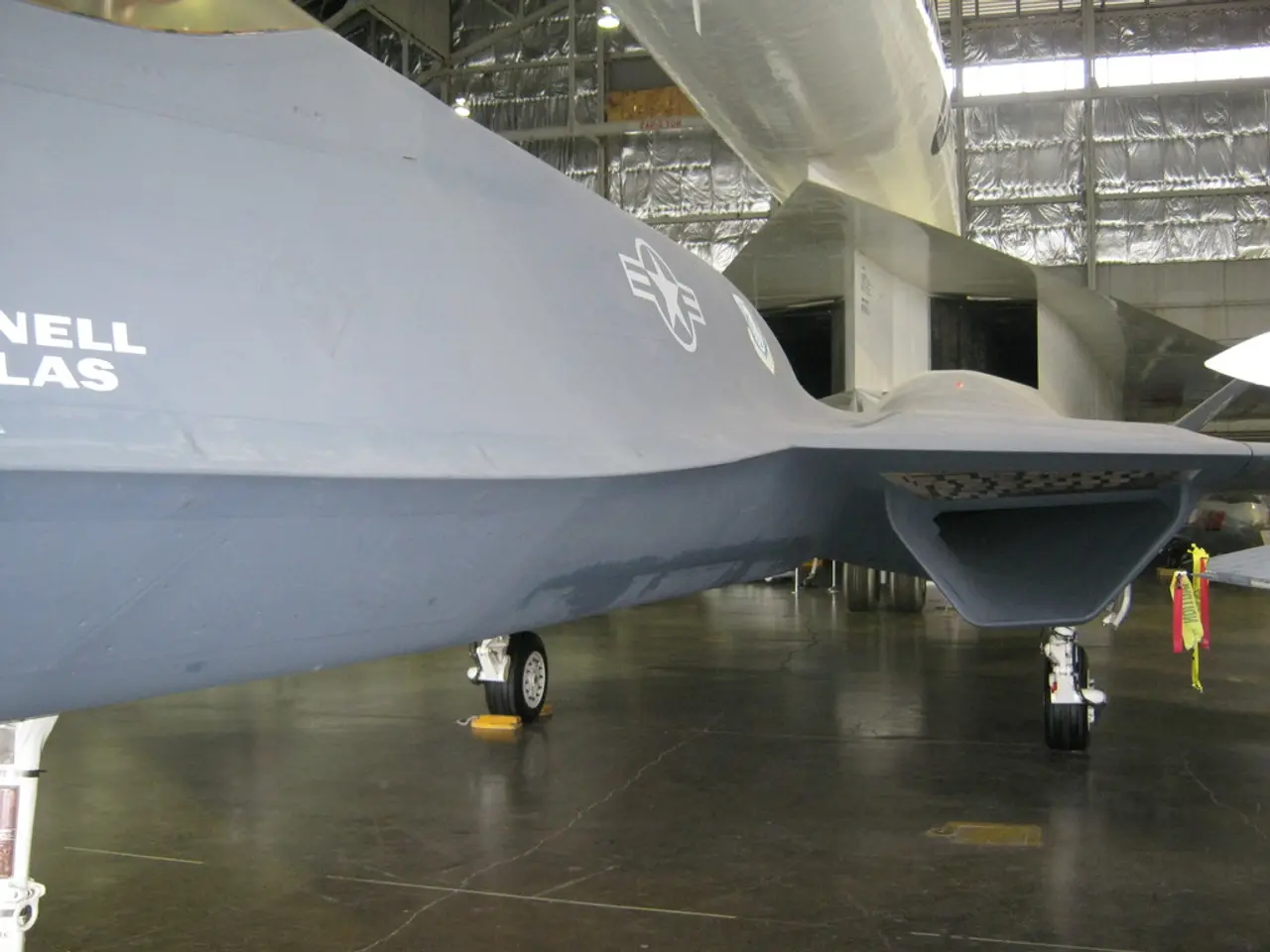Solar Sail: Comprehensive Definitions and In-depth Explanations - Aerospace Terminology Guide for Space Voyages
In the realm of space exploration, solar sails are emerging as a promising propulsion method for long-duration missions to distant planets and interstellar space. These innovative systems, harnessing the power of sunlight, offer a unique combination of simplicity, efficiency, and scalability for certain types of missions.
The sail of a solar sail is typically made of a thin, reflective material such as Mylar or aluminum. By orienting the sail in a specific direction relative to the sun, the spacecraft can harness the thrust from radiation pressure, the force exerted by photons when they reflect off a surface. This principle allows for continuous acceleration without the need for onboard propellant, setting solar sails apart from traditional rocket propulsion.
Current advancements in solar sail technology focus on enhancing space weather monitoring, improving sail deployment, and exploring interstellar propulsion concepts. One such example is the SWIFT satellite constellation, equipped with advanced solar sails to maintain unique positions in space for early and more accurate warnings of solar storms and coronal mass ejections (CMEs). This capability provides earlier alerts to protect satellites, power grids, and astronauts from space weather hazards, marking a paradigm shift in space weather defense.
Demonstration missions like Solar Cruiser, scheduled for launch as early as 2029, will validate the deployment, orientation, and long-term stability of large solar sails in space, building on past missions such as NanoSail-D2, IKAROS, and LightSail-2, which demonstrated the fundamentals of solar sail deployment and control.
Future advancements are oriented toward deep-space and interstellar exploration. For instance, the T.A.R.S. (Tars Accelerator using Radiation from the Sun) concept, proposed by Professor David Kipping, reimagines solar sails by using a spinning, ribbon-like design to accelerate microscopic probes to speeds up to ~40 km/s using only solar radiation. This method offers a low-cost path for sending probes beyond the solar system, though it still falls short of relativistic velocities needed for fast interstellar travel.
More advanced concepts predict T.A.R.S. could propel spacecraft up to 1,000 km/s, enabling rapid missions within the outer solar system (e.g., reaching Pluto or Kuiper Belt Objects in months) and even catching fast interstellar objects like ‘Oumuamua. This speed would also allow reaching the Solar Gravitational Lens at about 600 AU in roughly three years, crucial for high-resolution observations of exoplanets.
Research is ongoing into complementary technologies such as magnetic shields and plasma propulsion to address challenges like deceleration and mission survivability, critical for longer or crewed solar sail voyages within the solar system. The 2025 International Symposium on Space Sailing (ISSS 2025) highlighted these advances and future directions in solar sails, drag sails, magnetic sails, and electric sails, emphasizing ongoing innovation in space sailing technology.
Solar sails are ideal for long-duration missions due to their low fuel requirements compared to traditional rockets. They are also lightweight and compact, making them well-suited for small spacecraft or CubeSats. However, their dependence on sunlight for operation can be variable and unpredictable in space, posing challenges that researchers continue to address.
The Planetary Society's LightSail spacecraft is a current example of a technology demonstration mission using solar sails. As we continue to push the boundaries of solar sail technology, we are paving the way for groundbreaking discoveries in the far reaches of our solar system and even beyond.
Science, technology, and space exploration converge in solar sail innovation, with researchers working tirelessly to enhance the capabilities of these lightweight, reflective spacecraft. Advancements in solar sail technology, such as the T.A.R.S. concept, aim to propel spacecraft at up to 1,000 km/s, revolutionizing deep-space and interstellar exploration, and making it possible to reach distant destinations like Pluto or Kuiper Belt Objects in months. This rapid momentum in space-and-astronomy is driven by ongoing research and collaboration within the scientific community, as demonstrated by events like the 2025 International Symposium on Space Sailing (ISSS 2025).




